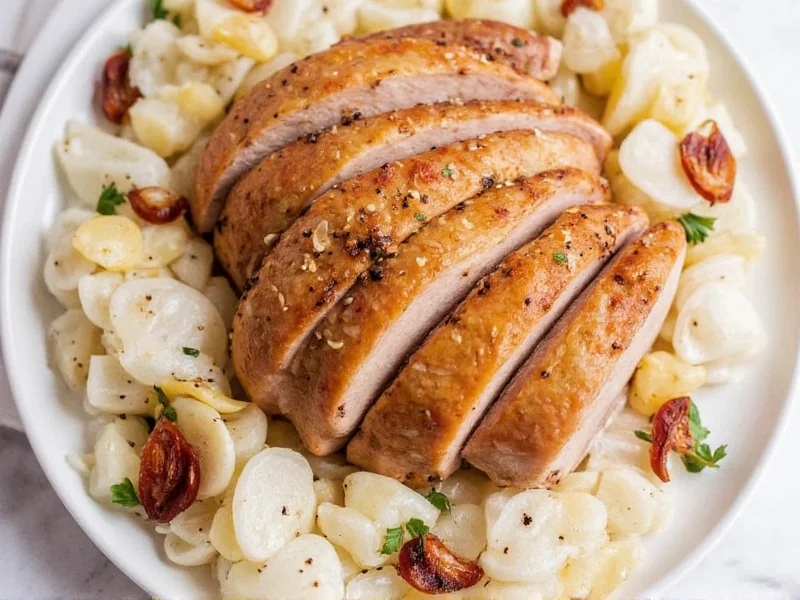When you're in the middle of preparing a holiday meal or weeknight dinner and realize you've run out of poultry seasoning, knowing reliable alternatives can save your recipe. This versatile spice blend is essential for traditional stuffing, roasted chicken, turkey, and gravy, but its absence doesn't have to derail your cooking plans.
Understanding Poultry Seasoning Composition
Poultry seasoning isn't a single spice but a carefully balanced blend designed to complement bird meats without overpowering them. Commercial blends vary slightly by brand, but the core ingredients remain consistent across most formulations. The typical poultry seasoning recipe includes:
| Primary Ingredient | Flavor Contribution | Percentage in Blend |
|---|---|---|
| Dried Sage | Earthy, slightly peppery base note | 30-40% |
| Dried Thyme | Subtle floral, lemony undertones | 25-35% |
| Dried Rosemary | Pine-like, woody background | 15-20% |
| Dried Marjoram | Sweet, mild oregano-like flavor | 10-15% |
| Black Pepper | Subtle heat and complexity | 5-10% |
| Nutmeg | Warm, sweet background note | 2-5% |
Effective Single-Spice Substitutes
When you need a quick poultry seasoning alternative and have limited spice options available, these single-spice substitutions work surprisingly well:
- Dried sage - Use at a 1:1 ratio as the dominant flavor in most poultry seasoning blends
- Herbes de Provence - Substitute at 3:4 ratio (3 parts herbes de Provence for every 4 parts poultry seasoning)
- Italian seasoning - Use at 1:1 ratio but reduce by 25% due to stronger oregano content
- Dried thyme - Substitute at 1:1 ratio for lighter dishes where sage might be too strong
Creating Custom Poultry Seasoning Blends
For the most accurate substitution, creating your own blend from individual spices yields the best results. These ratios work for most recipes calling for store-bought poultry seasoning:
Basic Poultry Seasoning Substitute Recipe
Combine these ingredients for every tablespoon of poultry seasoning needed:
- 1 teaspoon dried sage
- 1 teaspoon dried thyme
- 1/2 teaspoon dried marjoram or oregano
- 1/4 teaspoon black pepper
- 1/8 teaspoon dried rosemary (optional)
- Pinch of ground nutmeg or allspice
Adjustments for Specific Dishes
Different recipes benefit from slight variations in your substitute blend:
- For turkey and chicken roasting: Increase sage by 25% for more traditional flavor
- For stuffing and dressing: Add 1/8 teaspoon celery seed for authentic Thanksgiving flavor
- For gravy and sauces: Reduce black pepper by half to prevent bitterness
- For delicate poultry dishes: Omit nutmeg and reduce sage by 30%
When Substitution Ratios Need Adjustment
Not all recipes tolerate the same substitution ratios. Understanding when to modify your poultry seasoning alternative prevents flavor imbalances:
- Long-cooking dishes (like slow-cooked turkey legs): Reduce total substitute by 20% as flavors intensify over time
- Delicate sauces and gravies: Use only 75% of the recommended substitute amount
- Vegetable side dishes (like roasted root vegetables): Increase thyme by 50% for better vegetable pairing
- Meatloaf and meatballs: Add 1/4 teaspoon onion powder to your substitute blend
Common Substitution Mistakes to Avoid
Even experienced cooks make these errors when substituting for poultry seasoning:
- Using fresh herbs instead of dried - Fresh herbs require triple the quantity but change flavor balance
- Overusing rosemary - This strong herb can dominate if used beyond 20% of the blend
- Skipping the nutmeg - This small component provides essential warmth in traditional blends
- Not toasting spices first - Lightly toasting dried spices before use enhances flavor complexity
Making and Storing Your Own Poultry Seasoning
Create a larger batch of homemade poultry seasoning to have on hand:
- Combine 4 tablespoons dried sage, 4 tablespoons dried thyme, 2 tablespoons dried marjoram, 1 tablespoon black pepper, 1 tablespoon dried rosemary, and 2 teaspoons ground nutmeg
- Mix thoroughly in a small bowl
- Store in an airtight container away from light and heat
- Label with preparation date (best used within 6 months)
This homemade version maintains freshness longer than commercial blends, which often contain anti-caking agents that degrade flavor over time. For extended shelf life, store your custom poultry seasoning blend in the freezer where it will retain optimal flavor for up to one year.
Regional Variations in Poultry Seasoning Blends
Understanding regional differences helps when substituting for specific recipes:
- New England style: Contains more sage and less rosemary
- Southern style: Includes a touch of cayenne pepper for subtle heat
- Middle Eastern inspired: Substitutes sumac for some citrus notes
- Modern gourmet versions: May include lavender or fennel pollen
When substituting for regional recipes, adjust your blend to match the expected flavor profile. For example, when making a Southern-style dressing, add 1/8 teaspoon cayenne pepper to your substitute blend.











 浙公网安备
33010002000092号
浙公网安备
33010002000092号 浙B2-20120091-4
浙B2-20120091-4